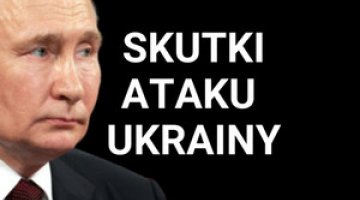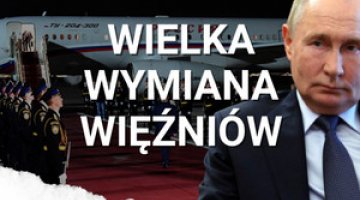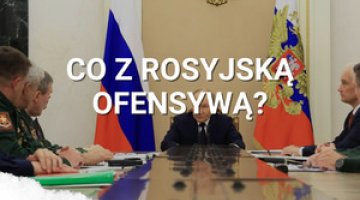Russia’s blackmail of the West

On 17 December, the Ministry of Foreign Affairs of the Russian Federation published a communiqué announcing that two draft agreements on security guarantees (one between Russia and the US and the other between Russia and the NATO member states) had been handed over to the US side on 15 December in Moscow during a meeting with a delegation led by Karen Donfried, US Assistant Secretary of State for European and Eurasian Affairs. Russian foreign ministry officials reportedly provided the Americans with detailed explanations and justifications regarding the documents. At the same time, the Russian Foreign Ministry published the contents of the two draft agreements.
Both documents are short, with preambles and eight (the agreement with the US) or nine (the agreement with the NATO member states) articles.
The drafts concretise and expand upon previously known Russian demands for restrictions on US and NATO military presence and activity in the post-Soviet area (including Ukraine in particular) and Central Europe. Among the most important demands contained therein is that the US and other NATO member states commit:
- to non-aggression and to refrain from actions that Russia considers harmful to its security;
- not to expand NATO, specifically eastwards, particularly into the post-Soviet area;
- not to establish bases and not to conduct military activities on the territory of Ukraine and other post-Soviet states which are not members of the Alliance;
- not to deploy intermediate-range and shorter-range missiles outside NATO territory and in areas from which Russian territory can be attacked;
- not to deploy nuclear weapons outside the territories of the countries that possess them and to dismantle the infrastructure for such deployment;
- not to deploy troops or conduct military activities in Ukraine and other post-Soviet states;
- to withdraw allied troops deployed on the territories of new NATO member states after May 1997 (following the signing of the NATO-Russia Founding Act);
- to designate a buffer zone around the borders of Russia and its allies in the Collective Security Treaty Organisation where exercises and other military activity at brigade level and above will be prohibited;
- to prevent overflights of heavy bombers and passage of warships in areas from which they could strike targets on Russian territory (especially in the Baltic and Black Seas);
- to ensure that fighter planes and warships of the Alliance countries keep a certain distance from similar Russian units in the event that they approach one another.
The agreement with NATO gives Russia the option to withdraw from it at short notice on any pretext.
For the detailed contents of the documents, see Appendix below.
Commentary
- The wording of the documents is categorical and represents not only a concretisation, but also an escalation of well-known Russian demands concerning European security.
- A hypothetical consent to the Russian demands would result in a fundamental overhaul of the current European security order in favour of Russia and to the disadvantage of NATO member and partner states (especially the Alliance’s eastern flank countries, including Poland and Ukraine). In particular, it would mean a legal formalisation of the Russian sphere of influence in the post-Soviet area (temporarily excluding the Baltic states) and the establishment of a security buffer zone in Central Europe.
- Both the radical wording of the documents, some of whose provisions are humiliating for the US, NATO and Ukraine, and the very fact that they have been made public suggest that Moscow does not really expect to win approval for them. Indeed, the far-reaching and often asymmetrical nature of the desired solutions in Russia’s favour is extremely difficult and usually impossible for the other side to accept.
- The fact that the presentation of the documents had been announced only a few days earlier by the Russian side and that its subsequent statements contain increasingly far-reaching demands suggests that the Kremlin did not expect them to become the basis for further talks with the US and that Karen Donfried’s visit to Moscow had no significant impact on this. Against this background, the lack of an early positive response from the US and NATO to Moscow’s demands (Washington has expressed its readiness to discuss some of them in consultation with its allies and partners) can be used as a propaganda justification for aggressive Russian actions, particularly for domestic Russian consumption and as a message to Western European public opinion.
- It follows from the above that the Kremlin has most likely decided to make an attempt to fundamentally change the status quo in the political and security sphere in Europe through unilateral actions that aggravate the international situation, including possibly military actions. These may particularly include:
1. Armed aggression against Ukraine following a provocation by the separatists or Russia itself, carried out either gradually (by escalation) or instantly under one of the following scenarios:
- an offensive by the separatist forces (supported by regular Russian troops) in Donbass, leading to a significant shift of the front line;
- as above, plus Russian air and missile attacks on strategic military and civilian sites in Ukraine, leading to the paralysis of the state;
- a ground offensive by Russian forces from various directions (including Belarus), resulting in the occupation of vast areas of Ukraine – the least likely scenario, but one that cannot be ruled out.
These Russian actions would probably go hand in hand with other, non-military aggressive measures, including a tightening of the energy blockade of Ukraine, a possible reduction or complete suspension of gas transit to the EU via Ukraine’s gas pipeline system, cyber attacks, and also possibly sabotage and/or terrorist actions against critical infrastructure facilities, leading to the paralysis of critical state systems. In Moscow’s calculus (subject to significant risk of error), such actions would break Ukraine’s will to resist and trigger a political upheaval, leading to Kiev’s and the West’s de facto acceptance of the country’s limited sovereignty.
2. A major increase in Russian military presence in Belarus with a permanent deployment of Russian troops, missile systems and possibly even nuclear weapons.
3. Aggressive hybrid actions against NATO’s eastern flank countries (including Poland): displays of force (e.g. unannounced mass drills in the border area and on the Baltic and Black Seas), hybrid operations and possible armed provocations (airspace violations, land border violations, shelling), cyber attacks, including against critical infrastructure, and other subversive operations against selected countries on the Alliance’s eastern flank (particularly the Baltic states and Poland).
- These actions are prompted by Russia’s perception of the current situation as a „window of opportunity”, which involves a number of elements, including:
1. A major energy crisis in Europe which on the one hand significantly boosts Russia’s revenues and on the other discourages European countries from imposing potential sanctions against it.
2. The COVID-19 pandemic (and a possible deterioration of the situation due to the spread of new mutations of the virus) and its negative consequences for the functioning of Western countries, including those that weaken their ability and willingness to respond decisively to Russian actions.
3. A political and socio-economic weakening (in Moscow’s view) of key EU and NATO countries, including in the context of the change of government in Germany and the presidential election campaign in France.
4. A weakening of the US (in Moscow’s view), the Biden administration’s focus on domestic problems and the challenge from China (with rising tensions over Taiwan).
- This interpretation is also supported by Russia’s systematic preparations for severe economic sanctions from the West, including intensive accumulation of financial reserves, development of alternative interbank payment systems, minimisation of the use of the dollar in trade settlements, import substitution, expansion of the national Internet system, as well as increased budget spending on internal security and national defence and also prioritisation of the development of new types of weapons, especially strategic ones.
- Moscow appears to believe that the West is not ready to impose sanctions (in response to its aggressive actions) that are potentially most painful for the Russian economy, such as an embargo on imports of Russian oil and possibly natural gas, or a complete blockade of the borders with Russia and Belarus, which would seriously impede trade. Meanwhile, some of the sanctions under consideration (a total ban on trading in Russian sovereign debt or excluding the Russian Federation from the SWIFT financial transaction settlement system) would cause problems for the Russian economy, but would not cripple it. Moscow also seems to believe that the contemplated block on the launch of the Nord Stream 2 pipeline would be very difficult for the German authorities, especially when faced with reduced or halted transit of Russian gas through Ukraine in the coming winter season.
- The current escalation of Russia’s aggressive actions and rhetoric is at the same time an element of psychological warfare aimed at convincing primarily the US, but also key European countries, that only serious security concessions to Moscow will make it possible to salvage peace in Europe. Indeed, any (de facto unilateral) concessions from the US, NATO and Ukraine will be beneficial to Russia’s interests and allow Moscow to keep up the tensions and pressure on them. Obtaining concessions from the West without resorting to military action is the Kremlin’s preferred scenario, which generates fewer political risks.
APPENDIX
Treaty between the United States of America and the Russian Federation on security guarantees




